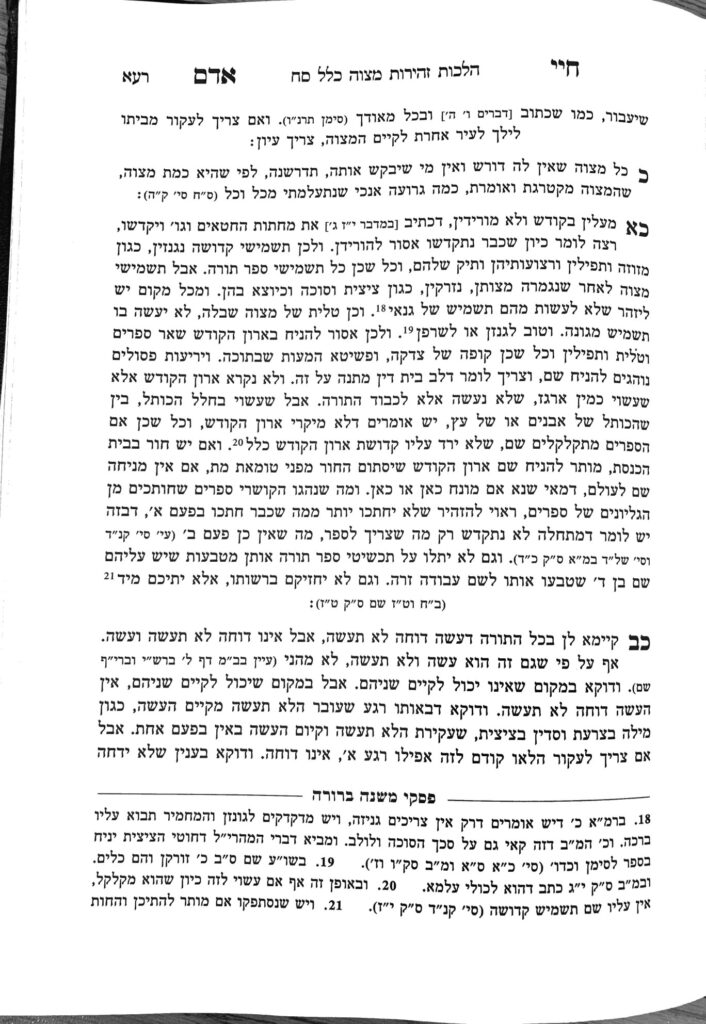We are continuing in siman 21, regarding the concept of ma’alin bakodesh. Today, we will discuss the halachos of genizah.
In Parshas Re’eh, the Torah tells us that Klal Yisroel has a mitzvas asei to destroy any avodah zarah they find in Eretz Yisroel, break their mizbeichos, cut down their asheiros, etc, to the point that there is no memory of the avodah zarah. The Torah continues, and says, lo sa’asun kein laHashem, not to do the same to Hashem. Chazal understood that this pasuk refers to destroying anything kodesh, to the extent that even removing a stone from the mizbeach is assur. The pasuk also specifically says v’ibadetem es shemam, that the names of the avodah zarah be destroyed, so Chazal learn that it is assur to destroy Hashem’s name in addition to destroying a physical presence of kedusha.
Regarding the destruction of a physical presence of kedusha, the Rema (Orach Chaim siman 152) discusses a person who accidentally pulls out a stone from a shul or other makom kadosh. He concludes that they have transgressed this issur. Although it is not fully clear whether the issur transgressed is deoraysa or derabanan, the Rema and Magen Avraham both understand it to be deoraysa.
If the item removed was removed for the purpose of fixing it, there is no issur, because the purpose of its removal is not for destruction.
Regarding the issur to destroy Hashem’s name, the issur refers to destroying one of the seven names of Hashem which appear in the Torah, which have intrinsic kedusha. They include the Shaim Havaya, Adnus, Keil, Elokim (in all it’s forms), Shakai and Tzevakos. It does not include words which describe Hashem, such as rachum, chanun, etc. One transgresses this issur even by erasing only part of the name.
In hilchos Yesodei Hatorah, the Rambam writes that if one destroys kisvei kodesh, even without destroying a name of Hashem, they receive makos mardus (rabbinic lashes). However, in the Rambam’s Sefer HaMitzvos, he writes that the issur deoraysa of lo sa’asun kein laHashem includes destroying kisvei kodesh. It is not clear how to answer this contradiction
In siman 154, the Mishnah Berurah writes (based on the Magen Avraham) that one transgresses an issur deoraysa, in accordance with the Rambam in Sefer HaMitzvos. The Pri Megadim writes that the issur deoraysa only applies to an item written on klaf with ink. Thus, in most situations, destroying kisvei kodesh without Hashem’s name is an issur derabanan and not deoraysa.
Summary
There is an issur deoraysa to destroy a physical presence of kedusha, such as removing a stone from the wall of a shul. If one does so for the purpose of renovation, there is no issur.
There is an issur to destroy one of the seven names of Hashem.
There is an issur to destroy kisvei kodesh, even without Hashem’s name.



